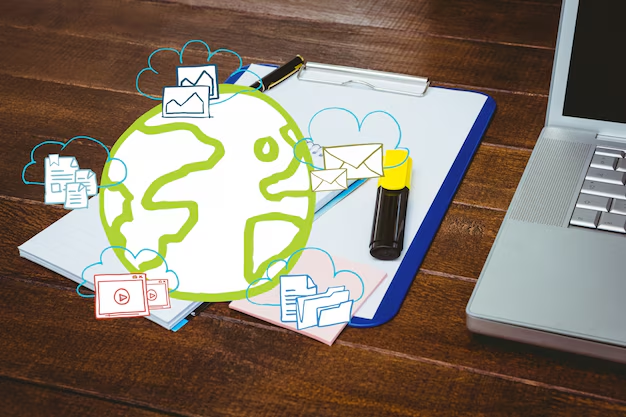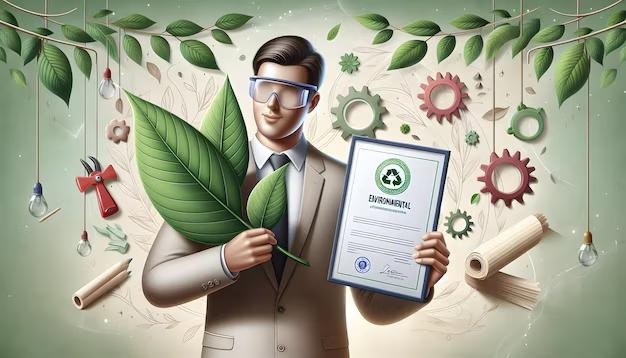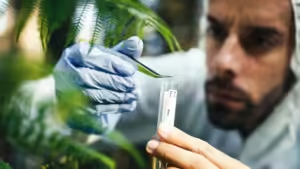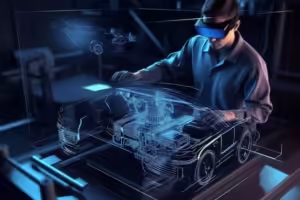In an era where product reliability and performance are paramount, environmental testing has emerged as a critical component of product development across various industries.
Environmental testing involves evaluating a product’s behavior and performance under specific environmental conditions, such as extreme temperatures, humidity levels, vibration, and exposure to dust or corrosive elements.
As products are increasingly expected to function optimally in diverse and challenging environments—ranging from consumer electronics used in harsh outdoor conditions to aerospace components subjected to extreme altitudes—the significance of thorough environmental testing cannot be overstated.
The impact of environmental factors on product performance can be profound. A device that functions perfectly in a controlled laboratory setting may fail under real-world conditions, leading to product recalls, reputational damage, and financial losses.
As such, manufacturers must prioritize environmental testing to ensure their products can withstand the rigors of everyday use and meet the expectations of consumers and regulatory bodies alike.
This article aims to explore the key considerations for environmental testing in product development. By examining the types of environmental tests, the importance of rigorous testing protocols, and the challenges faced by manufacturers, we can better understand how to effectively integrate environmental testing into the product development lifecycle.

Importance of Environmental Testing in Product Development
Environmental testing plays a crucial role in the product development lifecycle, influencing design decisions, ensuring regulatory compliance, and enhancing overall product quality. Here are some key reasons why environmental testing is essential:
A. Ensuring Product Reliability and Longevity
Environmental testing helps identify potential weaknesses and failure modes of products under various conditions. By subjecting products to extreme temperatures, humidity, vibration, and other environmental stresses, manufacturers can assess how these factors may impact their performance over time. This proactive approach ensures that products are not only functional upon release but also reliable throughout their intended lifespan.
B. Identifying Potential Failures Under Real-World Conditions
In the real world, products are often exposed to unpredictable environmental conditions that can lead to premature failure. Environmental testing simulates these real-world scenarios, allowing manufacturers to identify issues that might not be apparent during standard testing. For example, electronic devices used outdoors may face humidity and temperature fluctuations that could affect their components. By uncovering these vulnerabilities early, companies can make design modifications or choose more suitable materials to mitigate risks.
C. Meeting Regulatory Compliance and Industry Standards
Many industries are governed by strict regulations that mandate specific environmental testing protocols to ensure product safety and performance. For instance, products used in aerospace, automotive, and medical sectors must adhere to rigorous standards set by organizations such as the Federal Aviation Administration (FAA), the International Organization for Standardization (ISO), and the Food and Drug Administration (FDA). Environmental testing ensures compliance with these regulations, helping manufacturers avoid legal repercussions and maintain market access.
D. Enhancing Customer Satisfaction and Trust
Consumers today are increasingly aware of product quality and reliability. A product that fails to perform as expected can lead to dissatisfaction and erode brand trust. By prioritizing environmental testing, manufacturers can demonstrate their commitment to quality and reliability, ultimately enhancing customer satisfaction. When customers feel confident in the durability and performance of a product, they are more likely to remain loyal to the brand and recommend it to others.
E. Supporting Competitive Advantage
In a competitive marketplace, the ability to deliver high-quality, reliable products can set a company apart from its competitors. Effective environmental testing allows manufacturers to develop products that not only meet but exceed customer expectations. By investing in rigorous testing processes, companies can position themselves as industry leaders, gaining a competitive edge and attracting a loyal customer base.
F. Facilitating Innovation
Environmental testing is not just about identifying flaws; it also provides insights that can drive innovation. By understanding how products perform under different conditions, manufacturers can develop new features, materials, and technologies that enhance product functionality and user experience. This iterative process of testing and feedback fosters a culture of innovation, enabling companies to stay ahead of market trends and consumer demands.

Key Considerations for Environmental Testing
When implementing environmental testing in product development, manufacturers must consider several critical factors to ensure the testing process is thorough and effective. These considerations help optimize product design, enhance reliability, and meet regulatory standards. Below are the key considerations for successful environmental testing:
A. Product Design and Materials
- Material Selection: The choice of materials significantly impacts a product’s ability to withstand environmental conditions. Selecting materials that are resistant to corrosion, temperature extremes, and humidity can enhance durability and reliability. For example, using specialized coatings or plastics can protect components from moisture and corrosive elements.
- Design for Manufacturability: Products should be designed with their intended environmental conditions in mind. This may involve implementing seals, protective housings, or other design features that mitigate the impact of environmental stresses. A well-thought-out design can reduce the likelihood of failure during testing and in real-world use.
B. Testing Methods and Protocols
- Diverse Testing Methods: Employing a variety of testing methods is essential to comprehensively assess a product’s performance. Common environmental tests include thermal cycling, humidity exposure, vibration testing, and salt spray testing. Each method simulates different environmental conditions, allowing for a more accurate evaluation of product resilience.
- Standardized Test Protocols: Developing standardized test protocols ensures consistency and reliability in testing results. Manufacturers should adhere to established standards and guidelines, such as those from the American Society for Testing and Materials (ASTM) or the International Electrotechnical Commission (IEC). Standardization facilitates comparison of results and helps ensure compliance with regulatory requirements.
C. Test Environment Simulation
- Accurate Simulation: It is crucial to create testing environments that accurately replicate real-world conditions. Environmental chambers and controlled testing environments should be used to simulate factors such as temperature extremes, humidity levels, and atmospheric pressure. This helps ensure that test results reflect actual product performance.
- Consideration of Variability: Environmental conditions can vary widely based on geography, usage, and other factors. Testing should account for these variations by including a range of conditions in the testing protocol. For example, a product intended for use in both tropical and arctic environments may need to be tested across a broader spectrum of temperatures and humidity levels.
D. Data Collection and Analysis
- Establishing Metrics: Clear metrics for evaluating product performance during environmental testing are essential. Metrics may include failure rates, operational thresholds, and performance degradation over time. Establishing these metrics enables manufacturers to assess product reliability quantitatively.
- Real-Time Monitoring: Implementing real-time data collection and monitoring during testing can provide insights into product behavior under stress. Advanced sensors and data logging systems can capture critical information that helps identify potential failure points and informs design improvements.
- Thorough Analysis: Analyzing test results comprehensively is vital to identify weaknesses and areas for improvement. Manufacturers should conduct root cause analysis for any failures observed during testing, allowing for targeted design revisions and enhancing product reliability.
E. Iterative Testing and Prototyping
- Multiple Rounds of Testing: Environmental testing should not be a one-time event but rather an iterative process throughout the product development lifecycle. Conducting multiple rounds of testing allows manufacturers to refine their designs based on feedback and insights gained from earlier tests.
- Integrating Feedback: Design revisions based on testing outcomes should be integrated into prototypes. This iterative feedback loop fosters continuous improvement and ensures that final products are well-suited for their intended environments.
- Prototyping for Validation: Prototyping is a valuable tool in validating design changes. By testing prototypes under environmental conditions, manufacturers can assess the effectiveness of modifications before full-scale production.
Challenges in Environmental Testing
While environmental testing is essential for ensuring product reliability and compliance, it is not without its challenges. Manufacturers often encounter several obstacles that can complicate the testing process and affect the outcomes. Here are some of the primary challenges faced in environmental testing:

A. Complex Testing Requirements
- Diverse Environmental Conditions: Products may need to be tested against a wide range of environmental conditions, including extreme temperatures, humidity, vibration, dust, and chemicals. Each of these conditions requires specific testing protocols, which can be complex and time-consuming to develop and execute.
- Regulatory Compliance: Adhering to various regulatory standards can be challenging, especially for products that operate in multiple markets. Different industries and regions may have varying requirements, necessitating additional testing and documentation to demonstrate compliance.
B. High Costs and Resource Allocation
- Cost of Equipment and Facilities: Environmental testing often requires specialized equipment and facilities, such as climate chambers, vibration tables, and dust chambers. The costs associated with acquiring and maintaining this equipment can be significant, particularly for small and medium-sized enterprises (SMEs).
- Labor and Time Investment: Conducting thorough environmental testing can be labor-intensive and time-consuming. The need for skilled personnel to perform tests, analyze results, and make design adjustments can strain resources and extend product development timelines.
C. Data Management and Analysis
- Volume of Data: Environmental testing generates large amounts of data that must be collected, processed, and analyzed. Managing this data effectively can be challenging, particularly when trying to extract actionable insights and make informed design decisions.
- Interpreting Results: Understanding the implications of test results can be complex. Manufacturers must be able to differentiate between normal wear and tear and genuine product failures, requiring expertise and experience in data analysis and product behavior under stress.
D. Limited Testing Scope
- Real-World Variability: Laboratory tests may not fully capture the variability of real-world conditions. Factors such as user behavior, environmental changes, and unexpected stresses can impact product performance in ways that standardized tests cannot replicate.
- Prototyping Constraints: The availability of prototypes for testing can limit the scope of environmental testing. If prototypes are not readily available or if design changes are made late in the development process, manufacturers may face challenges in conducting timely and comprehensive tests.
E. Integration into Development Cycles
- Balancing Speed and Quality: Manufacturers often face pressure to bring products to market quickly. This urgency can lead to shortcuts in the environmental testing process, potentially compromising product quality and reliability.
- Cross-Functional Collaboration: Effective environmental testing requires collaboration among various teams, including design, engineering, and quality assurance. Lack of communication or alignment among these teams can hinder the testing process and lead to incomplete evaluations.
F. Evolving Technologies
- Rapid Technological Advances: The fast pace of technological advancement can complicate environmental testing. New materials, designs, and functionalities may not have established testing protocols, making it challenging to evaluate their performance accurately.
- Adaptation to New Standards: As industries evolve, so do the standards and expectations for environmental testing. Keeping up with these changes requires continuous learning and adaptation, which can strain resources and require additional training for personnel.
Conclusion
Environmental testing is a critical component of product development, ensuring that products meet reliability, safety, and performance standards in diverse conditions.
As manufacturers increasingly recognize the importance of delivering high-quality products capable of withstanding real-world challenges, environmental testing must be approached with careful consideration of key factors and potential obstacles.
While the importance of environmental testing is clear, it is equally essential to acknowledge the challenges that come with it, including complex testing requirements, high costs, data management issues, and the need for cross-functional collaboration.
By proactively addressing these challenges, manufacturers can develop effective testing strategies that integrate seamlessly into their product development cycles.
Ultimately, a robust environmental testing program not only enhances product quality and customer satisfaction but also supports regulatory compliance and fosters innovation.
As industries evolve and technology advances, manufacturers must remain adaptable, continuously refining their testing methodologies to meet emerging standards and consumer expectations.
By prioritizing environmental testing, companies can ensure their products are reliable and resilient, securing a competitive advantage in the market and building lasting trust with their customers.












